THE SILENCE OF OTHERS: Momentous Story Must Be Seen On The Big Screen (& Interview With Filmmakers)
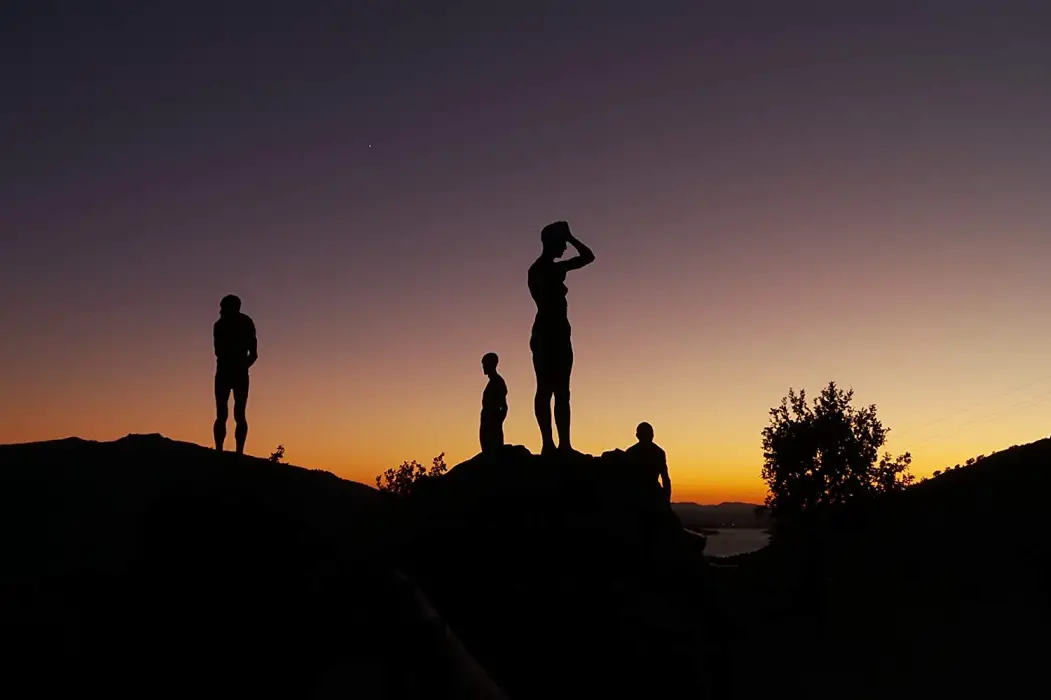
Musanna Ahmed is a freelance film critic writing for Film…
“Do you find streets in Germany named after Hitler’s guys?”
Franco-ism is not only not disregarded in Spain but, in some cases, it’s flaunted straight up with examples such as streets named after some of the most reprehensible men of the time. José Maria Galante, once a young leftist student activist, was one of the victims of torture by the dictatorship. He lives on Calle General Yagüe, the street named after the Spanish army officer known as the Butcher of Badajoz. “Every day I wake up on a street dedicated to this war criminal”, laments Mr Galante.
In 2017, Mr Galante and his wounded generation were granted a victory with the governing board of Madrid approving the name change of such streets out of respect for those who suffered persecution or violence during Franco’s reign. Crimes against humanity have no statue for limitations, and the hauntingly beautiful The Silence of Others tracks the colossal struggle for justice.
Almudena Carracedo and Robert Bahar’s documentary is centred on the elder generation of survivors who come together to form a lawsuit in Argentina against officials who committed crimes under the Franco regime. Stylistically situated somewhere between Nostalgia for the Light and The Act of Killing, The Silence of Others doesn’t feature recreations but listening to the plaintiffs describe how they or their close ones were treated at the time is often gut punching.
Their recollection of the events are vivid, even decades later, and they take the filmmakers to the sites of horror. The camera offers them to speak of cruel circumstances they faced – otherwise, they can’t be widely heard due to the state-enforced silence.
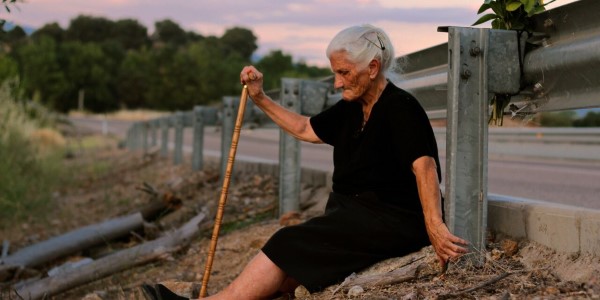
Carracedo narrates her documentary by giving us the hard-hitting history about Franco’s tyranny, including the stolen children (those who were abducted from parents with opposite political leanings) and the troubling Pact of Forgetting, a decision that granted amnesty not only to the political prisoners but to those who imprisoned them too. The pact has meant that the atrocities have not been something that the subsequent generations have known.
A quick-cut montage of relatively younger individuals share their lack of knowledge of the amnesty. This genial edit both manages to establish a consensus on what the contemporary generation is taught about history and helps achieve the filmmakers’ ambitions to capture the wide scope of Spain for their epic exploration. Furthermore, what’s impressive is the insight into the Franco Foundation, who share their point of view that Franco was never wrong. They say he saved Western Christian civilization from Communism, and archive footage of meetings with Eisenhower and Nixon implicates a sympathetic USA.
The six-year long story is extremely moving, the perseverance of the plaintiffs is deeply inspiring. There’s a movement formed in the film, and the film itself is a part of that movement, and the two work together to enhance the chances of real change. The narrative’s effect is strengthened through the co-directors’ command of capturing stunning images, shot by Carracedo herself (Bahar took on a major micro-element role too, as the sound recordist), that simply demand wide theatrical attention for their film.
A mournful but elegant string-based score, terrifically composed by Leonardo Heiblum and Jacobo Lieberman, artfully accompanies these powerful images. The Silence of Others must be seen on the big screen where we can appreciate its beautiful imagery and sound, and give our complete concentration to its momentous story about a country that should not forget its history.
Interview with Almudena Carracedo and Robert Bahar
I was able to speak to co-directors Almudena Carracedo and Robert Bahar for an extensive interview. We discussed the long filmmaking process, the reception of the film so far, influences, the Almodovar brothers’ involvement and their best advice for aspiring filmmakers.
Musanna Ahmed for Film Inquiry: It took six years to make this film.
Robert Bahar: Yes. Seven, even. We filmed for six years then after that there were 14 months of editing.
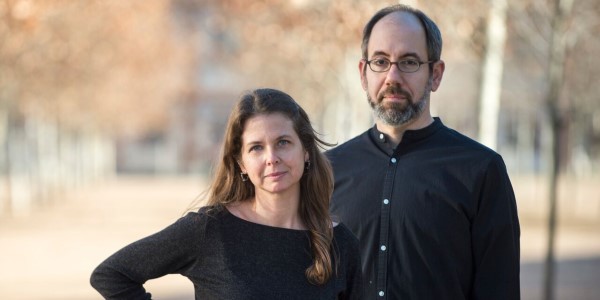
Making a film for so long, were there many revelations or narrative developments that caused a huge restructure?
Almudena Carracedo: For the first half of those seven years, yes. We were permanently restructuring because we were trying to understand how to tell the story because it’s very complex with many twists and turns, characters and complex issues. We had this document called ‘”Re-conceptualisation.”
Robert Bahar: Every few months we’d be like “Time for reconceptualization!” and we’d go back. One of the most challenging things about the construction of this film was figuring out how to incorporate context. It’s a story where, if you just have the protagonist’s story, it’s very hard to understand how something like this could have happened in Spain. We figured out that the film needed context for people to emotionally engage with the characters.
But then of course as the editing process always is, you add more context than is necessary which then separates the audience from the characters. We went through a long process figuring out, “What’s the minimum necessary context?” There are little sections with Almudena’s voice where she explains a little about the transitions – the Pact of Forgetting, the Amnesty Law – to set up these elements.
Right. With a documentary like this, you never know when you’re going to end filming but did you have an idea that it would go on for so long?
Almudena Carracedo: We had no idea. In fact, we were living in Brooklyn at the time and we moved to Spain. We put all of our stuff in storage in New Jersey thinking we were only going to move for one year. We moved to Madrid temporarily and ended up there for six years.
Robert Bahar: Everything is still in storage in New Jersey.
Almudena Carracedo: [laughs] Right. I tend to be more impatient with the process because the subject was very difficult and it was painful to experience all of this through the characters. Robert would always say, “Don’t worry, just trust the process.” Because, as a filmmaker, if you do your due diligence and you keep working hard then you’re going to find what you need because it’s your story. You’re gonna find the ending, as we did, and you’re gonna find the right structure if you commit to making a great film. We edited for a year and a half and in the middle of that we had a film already but it was not good enough. We decided to just go back to the drawing board and bring down the entire editing board and start over again.
You just mentioned that it was a painful process. You became parents yourselves making this film so how did that affect you, considering the theme of this film?
Almudena Carracedo: When we moved to Spain we initially wanted to just make the film about the stolen children because that story was breaking out in 2010, which is the year our daughter was born. We were, as you can imagine, just horrified and appalled.
Robert Bahar: There was the emotional power in our engagement with this subject from the start and the horrors of it all – how can this have happened? The deeper we got in, the great emotion we had was actually that the people we were representing had suffered so much that we felt the fear of being able to make a film that would do justice to their struggle and the pain they were experiencing. So, at the beginning, we were experiencing shock, sadness and outrage about what we were learning and that transformed into a sense of responsibility, how we bring this to the world, and how we can convey, through the cinema, the vastness of the lack of justice that still exists.
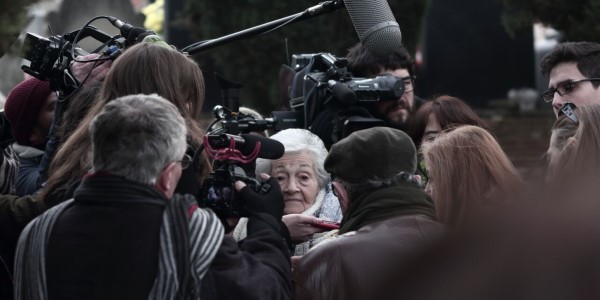
Almudena Carracedo: The reason why it took so long to make the film is because it didn’t want to make it just for the victims or just for the people are already engaged or empathetic. We wanted to make a film that could reach everyone else, not just in Spain either. That requires a lot of re-conceptualisation and a lot of thought.
Robert Bahar: And just a lot of editing.
Almudena Carracedo: A LOT of editing. Now that the film is done, it has become much bigger than us. It works really well with the audience and now we have a bigger responsibility. We’re embarking on a two-year impact campaign with the film now.
You state that your intention was to make a film for the world. I know that you’ve screened it in other countries, how has the reception been?
Almudena Carracedo: We premiered in Berlin and had a five-minute standing ovation which was very moving. We were 24 people on the stage between cast and crew because, you know, they had been waiting seven years to be on a stage for their story. It was really moving for them and still is. Actually, at the Sheffield screening one of the characters was crying as she walked on to the stage because she really felt the recognition. In Berlin, we won the Audience Award.
Then we were in Toronto and we were wondering how well it would work in North America but it was voted in the top ten for the Audience Award. A lot of people knew it was going to work well in post-conflict societies and that’s fantastic because we want The Silence of Others to serve as a case study on what not to do in the future. We go to all these other countries where they think they don’t have a conflicted past but they do. Every country has something to deal with in a way.
I think a big part in how you achieved that result was by showing all the sides of the conflict. What were the challenges in getting each side to have their say? How did you pitch the film to, say the Franco Foundation, and how easy was it for them to come on board?
Robert Bahar: In terms of the Franco Foundation, as an example, they’re actually very open to giving interviews and they know that a lot of the filmmakers contacting them are probably starting with a different viewpoint than their own. So it wasn’t a challenge for them in terms of access…
Almudena Carracedo: They always want to give their point of view so they allow interviews.
Robert Bahar: Yeah. I think the places where the film reveals the spectrum of feelings is – I consider this scene a beautiful scene if I say so myself – a scene where Maria Martini’s family, her children, are debating about whether the names of streets in Spain named after Franco’s generals should be changed or not. You see within one family, a family which has clearly has been suffering for decades, there is valid debate about what is the right way to reckon with the past. Even more than the Franco Foundation, which is an extreme, that’s what represents the true challenge which exists in Spain right now, the very diverse opinions on what should be dealt with and what should be left aside.
Almudena Carracedo: We wanted our film to be a part of that conversation, actually. We have theatrical distribution for Spain (in the fall) and what we precisely want to do is bring this film to every town and start a conversation. It’s been 80 years since the end of the war, 40 years since the start of democracy, and it’s about time to start discussing these things more openly.
I assume you’re having conversations about making sure this film is seen at a federal level too.
Robert Bahar: Yes.
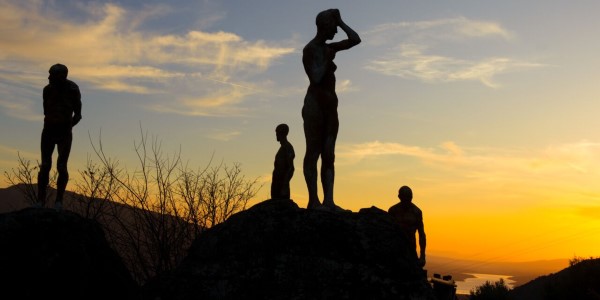
Almudena Carracedo: Our impact campaign will be going from the top down. Spain hasn’t officially recognised the conflict nor the victims as victims. Those victims are ‘officially’ criminals because their sentences haven’t been overturned so it’s exactly the opposite and we will taking this film all the way from parliament to small towns.
There’s a whole way of reparations you can work with, like memorialising, plaques, etc and if the mayor of a small town can say “We’re sorry about what happened here and we recognise that so-and-so were not criminals, we know where they’re buried and we will exhume them and give them a proper burial in the cemetery” then that would change people’s lives. So many people will be able to die in peace and tell their grandchildren who their grandparents really were. All these reparations than go from legal to human are what we really want to encourage with our film.
Naturally, the big question now is that now Mariano Rajoy, who’s shown in your film to be sympathetic to the notion that Spain should forget its past, has been ousted, will there be more open conversations about this subject now?
Robert Bahar: Everyone is cautiously optimistic. Two things – yes, Mariano Rajoy and his party have definitely not wanted to investigate these issues. In fact he would proudly say that the budget for these “historic memory issues” is zero. Secondly, now that the socialist party is in power and there’s a coalition, the fact is that even from the centre there’s only been cautious progress before.
What gives me the most hope much more than local change is the younger generation. If you look at the 15M movement, sort of like the Occupy Wall Street movement but in Spain, when you talk to young people there who don’t know about this history, when you show them this film, they very clearly see the connection to contemporary issues of corruption and the origins of them in the Franco dictatorship. That gives me hope much more than one party or another.
Almudena Carracedo: The younger generation are really upset when they watch the film. We’ve had Spanish people in screenings in other countries – we haven’t premiered in Spain first because we wanted to start outside first – and they are so angry and upset about not knowing the history, and seeing that the country was trying to erase awareness of it. We want to tap in to that energy because it’s their right to know what really happened.
I agree with you, that’s an incredible response from them. Going back to the making of the movie, you have 450 hours of footage. Were there any major aspects that you had to cut?
Almudena Carracedo: We had to cut some of the characters who had other threads in the same story. They’re all present somehow but we developed three extrajudicial executions – the late years of Franco, the tortures and the stolen children. But there are many other threads, like exile, slave labour and re-education camps. It was painful for us and for the characters too, because they had to understand that the bigger picture was more important than their individual stories, but a lot of them are working with the film anyway.
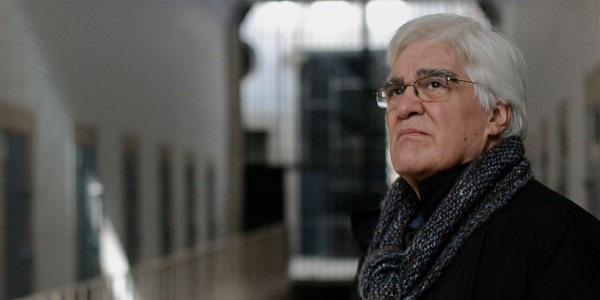
Robert Bahar: You have to make decisions to simplify. It becomes all about “Okay, we have a version of the film that’s about 125 minutes”, there’s all of these details in there so there’s extra things you understand but the emotional experience isn’t there. You get to a point where you’re trying to create a balance between body and soul. As the film got shorter and sharper, it got more soulful as it reached your heart. All those decisions are for the greater good but some people say things like, “You should have made a six-part series” and I hear that, I would watch that. [laughs]
Almudena Carracedo: Maybe next. [laughs] What was good was that we were three – our editor who was in L.A., Kim Robinson, as well as Robert and I, so having three people instead of two helped us make decisions. If two out of three agree on something then maybe they’re right, so it was a good way to make decisions.
Over the six years, was technology something that presented itself as challenge? Do you look back at early footage and see an evolution in your aesthetic?
Robert Bahar: The way we shoot, we’re a very small team. Almudena is the cinematographer and I do the sound. Certainly in my case I can say I hadn’t done sound that much before and so I was changing my kit a lot in the first couple of years, deciding exactly what the workflow would be, and to be honest as the six years go on I can see that the quality of my work gets much, much better. I actually think in the later part of the filmmaking, the scenes we were capturing were more whole. Some of our earlier filming included scenes of meetings and stuff like that.
Almudena Carracedo: Because we didn’t know the story. Near the end of the film you understand perfectly what you need and what you’re looking for. You film for 150 hours and you think at the moment that everything is potentially useful. One of the biggest technological challenges was that when we started editing at the beginning we were using Final Cut 7. We decided not to switch and we paid dearly. [laughs] I still love Final Cut 7 but having such a huge project on it was very challenging.
Robert Bahar: Next film we’ll be using Avid. [laughs]
The cinematography and the sound were sensational, I really loved the film from a technical point of view as well. When I first received the press notes, I saw the description comparing it to films like Patricio Guzman’s Nostalgia for the Light and Joshua Oppenheimer’s The Look of Silence. Could you tell me about the cinematic influences on the style of the film?
Almudena Carracedo: Absolutely. For us, Nostalgia for the Light is the film that has influenced us the most. The Look of Silence was an influence too, obviously. In the first years of eternal re-conceptualisation, we would ask ourselves, what’s the Atacama Desert (the desert in Chile where people searched for the remains of their loved ones following Pinochet’s atrocities, at the centre of Nostalgia for the Light as a metaphor) of this film? It was clear to us that it was the lawsuit but, again, it wasn’t clear on how to tell the story. What we love about Patricio Guzman is that he’s able to have a very deep analysis of his subjects but not lose the cinematic qualities.
Some human rights are very in-the-moment and they’re needed but we knew we didn’t want to just it to be a very important message, we wanted it to be a good film. We needed it to be a good film to do what we wanted it to do. We took special care in filming some scenes very slowly for example and going back and forth when shooting the statues. We went there like 10 times, just to get the right flowers behind for instance, depending on what time of year it was. We’re very attentive to detail, for better or worse, and in that sense I can say the film was hand crafted. It was very slowly made with a lot of attention to detail. In the last three months we were just looking at frame by frame.
Robert Bahar: Those two films are absolutely some of our major influences. We also always look back at Barbara Kopple, always going back to Harlan Country, USA. This film has part of that heavy composure and metaphor of the Patricio Guzman films but it also has some of the organisation and following of the social struggle like with Harlan County and American Dream, two films that are very foundational for me, that you also really see. You could also look back at Shoah, another film that looks back at tremendous trauma and the past and how we relate to victims and perpetrators.
I think it’s a good philosophy to have that you need to make a good film in terms of cinematic quality because it reminds me of Michael Moore two years ago, who showed Where to Invade Next over here, who said that you’re damaging the message if you’re not thinking of your film as a movie first hence he always likes to insert comedy where he can. Of course, comedy isn’t ideal for a film like this but the sound and the images really stand out in the cinematic experience.
Almudena Carracedo: Right. But there are also moments of humour in our film too. We really made sure there were moments where people could find relief and breathe until the next scene.
Robert Bahar: I definitely agree with what Michael Moore said. He has a different solution on you make a film more cinematic that works on an audience engagement level but that’s something that we were absolutely committed to. We knew the information in the film was important but at the same time there’s so much information that’s important and we felt that this film had to be cinema. Something with a soul as well as a brain.
The Almodovar brothers, can you tell us about their involvement with the film?
Almudena Carracedo: It’s a beautiful relationship. We knew they had been wanting to do something about this subject matter for a long time but they hadn’t found the right project. Initially we showed them a few scenes and they were very moved by the approach of the film. They kept saying they were moved the humanity of it. It’s very easy to get caught in the numbers and the rhetoric of what we’ve learned and what they loved is that we dealt with the issues through the characters.
That’s where the humanity is and the idea that you can sit with someone and see things differently after listening to them. They came on as executive producers to support the film, to secure the launch of it and to ensure it has the highest impact possible so they’ve been the most beautiful partners we could have had on this journey.
Robert Bahar: There’s three executive producers from their team, Agustín Almodóvar, Pedro Almodóvar and Esther García.
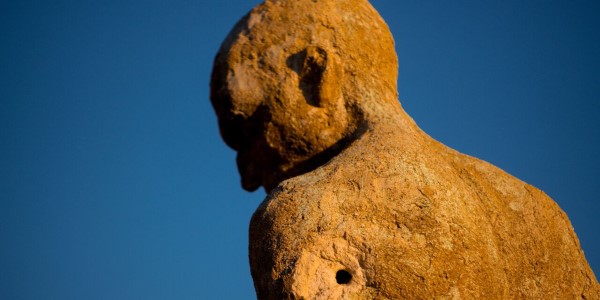
Almudena Carracedo: Esther is the main producer of their films.
Robert Bahar: Yes, her and Agustín. They’ve been doing a lot of strategic things to help the film move forward.
You clearly have demonstrated a gift for craftsmanship in how you’ve told an important story in an incredible way, through over six years’ worth of work. Do you have anything else in the works?
Robert Bahar: The next 18 months to 2 years will be really focused on the distribution, education and outreach of this film. The mission of this film will not be complete until what we see happens now. Ultimately, we hope to catalyse a dialogue in Spain. It’s too early to describe but there is a project that we’re trying to incubate – we’ve got some support from the Creative Capital Fellowship a while back – but we’re hungry to start making the next film.
Almudena Carracedo: This process is very similar to what we did before. We have a previous film (Made in L.A.) that was five years in the making and we were three years on the road with it. We premiered in 2007, went for three years on the road, and stopped in 2010 when our daughter was born. Maybe in 10 years we’ll be 10 years [laughs] we’ll be back here chatting about our next film.
Finally, what would be your best advice for filmmakers?
Robert Bahar: There are a couple of things I would say. Right off the bat, it’s never easy for anyone. I remember being at the IFP Market in New York, which is like the MeetMarket here, where we were pitching our previous project and seeing one of the other people having the same meetings we were having was Albert Maysles. I thought, if Albert Maysles has to do the rounds just like everyone else… it was a realisation that it’s SO competitive.
There are so many interesting projects compared to the number of slots. Two things I would say – in any part of the film business, it’s very useful to be doings two things in parallel. One is to have some kind of job that’s paying the bills and keeping you in the film business and slowly moving you up the ladder. Whether you’re an assistant editor trying to become an editor or you start out assisting on the camera to become a cinematographer, anything that’s gonna keep you working and learning the craft is something you have to do on one side.
On the other side, if you’re also driven to be a writer/director, you have to be at night and on weekends developing your own personal projects. Whether it’s writing a screenplay, or whether it’s starting a documentary and every weekend you’re shooting. It’s also good to have a friend who’s working with you. What happens is you keep working on those side projects and taking it to the markets and at a certain point the first or the second of those projects will click and you’ll be on the path to be a paid filmmaker.
But if you try and do that and you’re not doing this other thing, which is working, you won’t be growing in the craft and you won’t be finding mentors and you won’t be out at a market like this. I very firmly believe you need to be doing those two things but the other thing is you need such tremendous persistence. For this film we wrote 90 grant applications of which 75 were rejected!
Almudena Carracedo: Just imagine the thousands and thousands of papers that we wrote.
Robert Bahar: Rejected by people that we know, people that we respect, who felt that the project isn’t this or isn’t that.
Almudena Carracedo: Or “it’s not ready yet.”
Robert Bahar: Eventually, there were fifteen that funded the film so that we were able to support seven years of work and an extraordinary team. But we had to be rejected 75 times, out of 90. That’s how hard it is to make a film.
Almudena Carracedo: That’s true but…
Robert Bahar: You be more optimistic. [laughs]
Almudena Carracedo: Well, yes it’s very hard but if you compare with 30 years ago, now we can take a camera that’s not very costly and make a film. There’s not a lot of excuses anymore like “Well, I’m just waiting because I need to get the money.” You don’t need the money to start a documentary film. If there’s a story in your community that’s really upsetting you and you wanna do something about it, you can start filming.
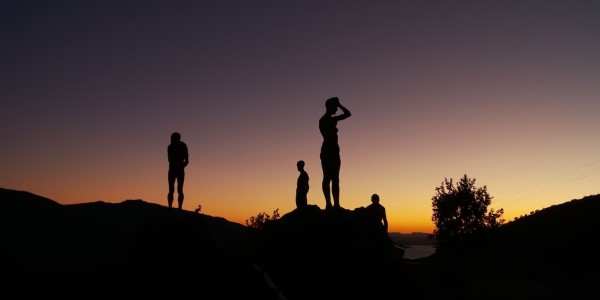
Slowly, you’ll understand story. Those thousands of pages of rejected applications were not wasted either because every time you write a proposal you understand your story much better. In that process of starting the film and writing applications, you will understand your project. But do not wait for money to come before you start or you’ll never start it.
Robert Bahar: We’re also professors…
Almudena Carracedo: We teach documentary in Madrid.
Robert Bahar: And with young filmmakers there’s something that a lot of them have difficulty in navigating and that’s understanding the difference between being absolutely true to your vision and learning from the feedback that you’re receiving. Sometimes, what young filmmakers do – and sometimes you have to do this on your first project – is that they have an initial vision and they just start and never stray from that vision. They go and pitch it all around and listen to the feedback…
Almudena Carracedo: “No one understands my project but I do.”
Robert Bahar: Exactly. Sometimes they just don’t listen or realise that they’re getting valuable feedback. Part of the rejections we got in this process were also getting feedback from very smart people that helped us grow and helped the project grow.
Almudena Carracedo: It’s a fine balance. You need to hear that without totally losing your vision.
Robert Bahar: Yes and you have to know when the world is wrong. [laughs]
Almudena Carracedo: Very often the solutions may not be correct but you need to think about why they say your film isn’t working. It’s a learning process. We started Made in L.A. in 2001 and 17 years later we’re still learning and we’ll continue learning with our next project because this is a creative task – there is no right or wrong.
Film Inquiry would like to thank Almudena Carracedo and Robert Bahar for their time and insight.
The Silence of Others will premiere in Spain in the fall. It is currently seeking distribution in other territories however it is being screened at many festivals around the world throughout 2018, including the L.A Film Festival on the 23 and 24 September. To view screenings in other countries, click on the film’s website here and scroll down to the Screenings page.
Doc/Fest 10 is a series of combined review and interview features for ten films seen at the Sheffield International Documentary Festival 2018. You can view the rest of the features by clicking here.
Does content like this matter to you?
Become a Member and support film journalism. Unlock access to all of Film Inquiry`s great articles. Join a community of like-minded readers who are passionate about cinema - get access to our private members Network, give back to independent filmmakers, and more.
Musanna Ahmed is a freelance film critic writing for Film Inquiry, The Movie Waffler and The Upcoming. His taste in film knows no boundaries.













